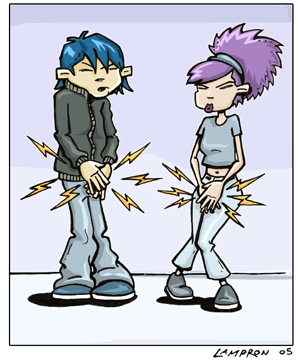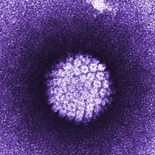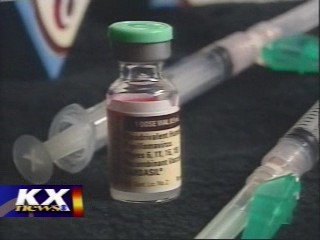


Sexually Transmitted
Infections (STI)
Formerly known as
Sexually Transmitted Diseases (STD)
What are sexually transmitted Diseases? Sexually transmitted diseases are infections you can get by having sex with someone who has an infection. Having intercourse usually passes these infections, but they can also be passed through other types of sex. Viruses or bacteria can cause STIs. STIs caused by viruses include hepatitis B herpes, HIV and the Human Papiloma Virus (HPV). STIs caused by bacteria include Chlamydia, gonorrhea and syphilis.
Are you at risk for having a sexually transmitted disease?
If you have ever had sex, your may be at risk for having an STI.
Your risk is higher if you have had many sex partners, have had
sex with someone who has had many partners or have had sex without
using condoms. Some common symptoms, transmission, and treatments
of STIs are listed below.
HERPES
 |
 |
 |
Symptoms for simplex I and
simplex II
Headache
Fever
Nausea
Chancre like sore near mouth, genitals, and other areas of the
body
Transmission
The virus is passed on when an infected person has the virus present
on the skin and another person makes direct contact with the affected
area.
The virus is likely to be present from the first signs of tingling
and itching at the infected area.
People who do not know they are infected often pass on the Herpes
Simplex viruses.
Treatment
Once diagnosed, there are special precautions the person should
make.
Infected persons cannot get rid of the virus. Although there
are many drug available that will suppress symptoms during outbreaks.
Doctors often prescribe Chorophor for outbreaks. The drug
will help minimize skin damage and prevent future outbreaks.
HUMAN PAPILLOMA VIRUS
(HPV)
 |
 |
 |
Symptoms
HPV is highly contagious and has no cure
Men and women often develop warts around vaginal openings, the
anus, the rectum, the penis, and the mouth.
HPV has been linked to nearly 80% of cervical cancer cases.
Some people may show no signs of the disease but may still be
in their blood stream and can be passed along to others.
Treatment
Even with treatment, HPV may be passed along to other people.
Treatment may include burning or freezing the warts off of an
infected area, but they may still come back.
Infected females are encouraged to go in for a colposcopy so their
doctor can check the visual extent of the damage.
There are nearly 100 strains of the virus. If a woman has
a strain, she may also have another strain that causes cervical
cancer. There is a new vaccine for females called Gardasil that prevent the high risk strains which cause cervical cancer.
GONORRHEA
Male Discharge Gonorrhea
|
Microscopic Gonorrhea
|
Female Cervix with Gonorrhea
|
Symptoms
Women
Bleeding associated with sexual intercourse
Painful burning sensation when urinating
Yellow or bloody vaginal discharge
Pelvic inflammatory disease
Men
White yellow or green pussy purulent discharge from penis
Burning sensations while urinating
Swollen testicles
Inflammation of genital area
Treatment
Doctors generally prescribe antibiotics for the disease
Unfortunately, there is a stain of gonorrhea originating from
South East Asia that is immune to the preferred antibiotics, and
it is spreading to Hawaii and the West Coast of America.
SYPHILIS
Secondary Syphilis
|
 |
Secondary Syphilis
|
Syphilis Chancres
|
Symptoms
There are four stages of Syphilis
Primary rash and sores on genitalia and mouth
Secondary- reddish-brown rash on hands and thighs, sores on genitalia
Latent No symptoms showing disease is in a "shut down"
made
Tertiary: Most violent stage, damages heart, skin, brain, and
causes Neurosyphilis, this often times leads to death.
Treatment
The disease is easily cured in its first few stages with antibiotics
It must be caught before the latent stage otherwise the bacterium
recesses and is not noticeable until it is too late.
CHLAMYDIA
Chlamydia discharge in male
|
Female cervix with Chlamydia and trichomonas
|
Symptoms
Chlamydia infections are similar to gonorrhea infections.
The bacteria live in the vaginal fluids and semen.
Can cause PID in women and epididymitis in men, booth serious
reproductive diseases.
It can also cause inflammation of the rectum and conjunctivitis.
Treatment
Health care providers will prescribe Azithromycin, Amoxocillin,
and other antibiotics.
The disease should be cured within the time of completing the
prescription.
Doctors will take a blood test or a culture of the secretions
from your vagina or penis to diagnose Chlamydia.
Can an STI be prevented?
Yes. The only sure way to prevent STIs is by not having sex.
If you do have sex, you can lower your risk by only having sex
with someone who isn't having sex with anyone else and who doesn't
have an STI. You should always use condoms when having sex,
including oral and anal sex.
Disclaimer: This information is not intended be a substitute for professional medical advice. It is provided for educational purposes only. You assume full responsibility for how you choose to use this information.
Resource
How to use a condom "Do and Don'ts" click link below.

http://www.ashastd.org/condom/condom_overview.cfm
Sex in America
* 134,000 new cases of syphilis are occurring each year, the highest
infection rate in 40 years.
* 1.3 million new gonorrhea cases occur annually.
* 24 million new cases of Human Papilloma Virus (HPV) occur annually,
including a high percentage among teens.
* 63% of all sexually transmitted infections (STI) cases occur among
people less than 25 years of age.
* AIDS is the leading killer of Americans between the ages of
25 and 44.
* Condoms provide virtually no protection against an STI called
the HPV. HPV is the most common medical problem seen by gynecologists
and causes almost all-cervical cancer in the U.S.
Sex, Lies and HIV
* 34% of men and 10% of women have told lies in order to have
sex.
* 68% of men and 59% of women have been involved with more than
one person that their current partner doesn't know about.
* 47% of men and 42% of women would understate the number of their
previous partners in order to convince someone to have sex.
Resources
"Sex, Lies and HIV," The New England Journal of Medicine, (March 15, 1990). The results of a study of 665 southern California college students
More STI Questions? Here is another link http://www.ashastd.org/